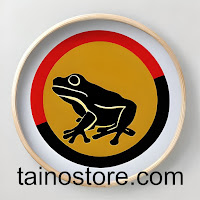TAINO HISTORY
Taino history
The Taíno people were indigenous people of the Caribbean who were present in the Caribbean islands when Christopher Columbus arrived in 1492. They are believed to have originated in the Orinoco River region of South America and migrated to the Caribbean islands around 600 AD.
The Taíno people had a complex society with a hierarchical structure, with a chief or cacique at the top. They were skilled farmers, and their main crops were cassava, yucca, and sweet potatoes. They also hunted and fished for their food.
The Taíno people had a rich culture, with a system of writing, art, music, and dance. They believed in a pantheon of gods and goddesses and had a complex religious system.
However, with the arrival of the Europeans, the Taíno people's population began to decline due to diseases brought by the Europeans, enslavement, and violence. By the early 17th century, the Taíno people were almost extinct. Today, there are still people of Taíno descent living in the Caribbean, but their culture and language have been largely lost.
Efforts have been made to revive the Taíno culture and language, and many people have begun to learn about their history and heritage. The Taíno people's legacy can still be seen in the Caribbean today, with many place names, foods, and cultural practices reflecting their influence.




Comments
Post a Comment